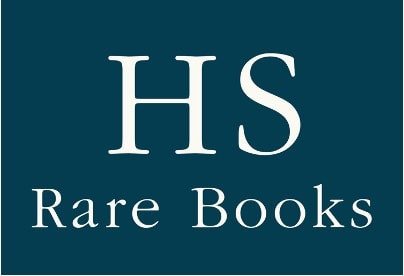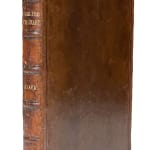![Callaway, John, A School Dictionary. Part First: Cingalese and English [...]. Part Second: English & Cingalese [...], Colombo, Wesleyan Mission Press, 1821.](https://artlogic-res.cloudinary.com/w_1600,h_1600,c_limit,f_auto,fl_lossy,q_auto/artlogicstorage/hsrarebooks/images/view/9acc4880801ddbfc195222c1d328f1fcj/hsrarebooks-callaway-john-a-school-dictionary.-part-first-cingalese-and-english-...-.-part-second-english-cingalese-...-colombo-wesleyan-mission-press-1821..jpg)
![Callaway, John, A School Dictionary. Part First: Cingalese and English [...]. Part Second: English & Cingalese [...], Colombo, Wesleyan Mission Press, 1821.](https://artlogic-res.cloudinary.com/w_1600,h_1600,c_limit,f_auto,fl_lossy,q_auto/artlogicstorage/hsrarebooks/images/view/5ce175266e022dc8a2b1a16cd28dd339j/hsrarebooks-callaway-john-a-school-dictionary.-part-first-cingalese-and-english-...-.-part-second-english-cingalese-...-colombo-wesleyan-mission-press-1821..jpg)
![Callaway, John, A School Dictionary. Part First: Cingalese and English [...]. Part Second: English & Cingalese [...], Colombo, Wesleyan Mission Press, 1821.](https://artlogic-res.cloudinary.com/w_1600,h_1600,c_limit,f_auto,fl_lossy,q_auto/artlogicstorage/hsrarebooks/images/view/db0ebfe2512d19a5e63559fe9faa44b0j/hsrarebooks-callaway-john-a-school-dictionary.-part-first-cingalese-and-english-...-.-part-second-english-cingalese-...-colombo-wesleyan-mission-press-1821..jpg)
![Callaway, John, A School Dictionary. Part First: Cingalese and English [...]. Part Second: English & Cingalese [...], Colombo, Wesleyan Mission Press, 1821.](https://artlogic-res.cloudinary.com/w_1600,h_1600,c_limit,f_auto,fl_lossy,q_auto/artlogicstorage/hsrarebooks/images/view/188437e77c69b9b3f8762dba583b7e84j/hsrarebooks-callaway-john-a-school-dictionary.-part-first-cingalese-and-english-...-.-part-second-english-cingalese-...-colombo-wesleyan-mission-press-1821..jpg)
![Callaway, John, A School Dictionary. Part First: Cingalese and English [...]. Part Second: English & Cingalese [...], Colombo, Wesleyan Mission Press, 1821.](https://artlogic-res.cloudinary.com/w_1600,h_1600,c_limit,f_auto,fl_lossy,q_auto/artlogicstorage/hsrarebooks/images/view/956c77c84c3b72c8c18a575410af18d1j/hsrarebooks-callaway-john-a-school-dictionary.-part-first-cingalese-and-english-...-.-part-second-english-cingalese-...-colombo-wesleyan-mission-press-1821..jpg)
![Callaway, John, A School Dictionary. Part First: Cingalese and English [...]. Part Second: English & Cingalese [...], Colombo, Wesleyan Mission Press, 1821.](https://artlogic-res.cloudinary.com/w_1600,h_1600,c_limit,f_auto,fl_lossy,q_auto/artlogicstorage/hsrarebooks/images/view/168195a7da93a00cafb9696cede257fbj/hsrarebooks-callaway-john-a-school-dictionary.-part-first-cingalese-and-english-...-.-part-second-english-cingalese-...-colombo-wesleyan-mission-press-1821..jpg)
Callaway, John
A collection of three early imprints from the Colombo mission press: a Sinhalese-English dictionary for schools by the missionary John Callaway, together with New Testament extracts in Sinhalese, and the Vocabulary in Cingalese, also by Callaway, all in a contemporary local calf binding. Callaway was appointed Superintendent of the Wesleyan Mission Press in 1818, so he would have been involved in the production of these books, not just as the author. All first editions except for the Vocabulary, which is a second edition.
Further images
4to (162 x 214 mm). VI, XXII, 92, (2), 151, (153)-156 pp.; [bound with] II: Miracles of Our Blessed Saviour, extracted from The New Testament, and circulated by the Colombo Auxiliary Bible Society. 1817. Ibid. (2), "35" (but: 34) pp.; [bound with] III: Callaway, John. A Vocabulary in Cingalese & English; with a Series of Familiar Phrases. Second edition. 1820. Ibid. VIII, 44 pp. 4to, (162 x 214 mm). Contemporary Ceylonese full calf with giltstamped spine title. A line between imprint and date excised from the third work, otherwise in excellent condition.
The Portuguese Creole language had been in use in Sri Lanka since the first settlers arrived in the early 16th century; a mix of it is still in use ‘Portuguese-based creoles are the oldest creoles based on a European language’ (de Silva Jayasuriya, Shihan, and Hugo Schuchardt. “’On the Indo-Portuguese of Ceylon’: A Translation of a Hugo Schuchardt Manuscript.” Portuguese Studies 15 (1999): 52–69).
Even after occupation by the Dutch, Portuguese remained in use until the late 18th century, with the arrival of the British altered the status quo. However, Portuguese remained the official language, albeit a corrupt version of it.
“John Callaway who was the first compiler of English vocables of Portuguese as spoken in Sri Lanka indicated that sometimes Ceylon Portuguese was written with Dutch spelling. According to him this was a low Portuguese”. (G. P. V. Somaratna, The rise and fall of the Portuguese language in Sri Lanka).
“Robert Percival writing in 1803 says: The language spoken most universally, both by Europeans and Asiatics who resort to Columbo, is the Portuguese of India, a base, corrupt dialect, altogether different from that spoken in Portugal. It may indeed be considered as a barbarous compound of a number of Indian languages combined with several European, among which French is very distinguishable. Though this dialect be considered as the most vulgar of any, yet it is a very useful and even necessary acquisition, as in most of the settlements on the coast, particularly those which have been in the possession of the Dutch, it is common to meet with both Moors and Malabars who speak it. In Ceylon it is particularly useful to be understood, and indeed without it, a person finds it impossible to maintain any conversation with the Dutch ladies, as they seldom address one in any other language. This last circumstance a surprised me good deal, as in every other place I always found everything accounted vulgar the particular abhorrence of the ladies. And yet the Dutch ladies at Colombo hardly ever attempt to speak even in their own families and to their own connections in Dutch, although it is reckoned the polite language.” (G. P. V. Somaratna).
Sinhala is an Indo-Aryan language primarily spoken by the Sinhalese people of Sri Lanka, who make up the largest ethnic group on the island, numbering about 16 million. It is also the first language of about two million other Sri Lankans. It is written in Sinhalese script, a Brahmic script closely related to the Grantha script of South India.
E. D. T. Kularatne, “The Wesleyan Methodist Mission in the Printing and Publishing Industry in 19th Century Ceylon”, Journal of the Royal Asiatic Society of Sri Lanka, New Series 42 (1997), pp. 213-242. Not in Zaunmüller or Vater/Jülg.
Join our mailing list
* denotes required fields
We will process the personal data you have supplied in accordance with our privacy policy (available on request). You can unsubscribe or change your preferences at any time by clicking the link in our emails.






